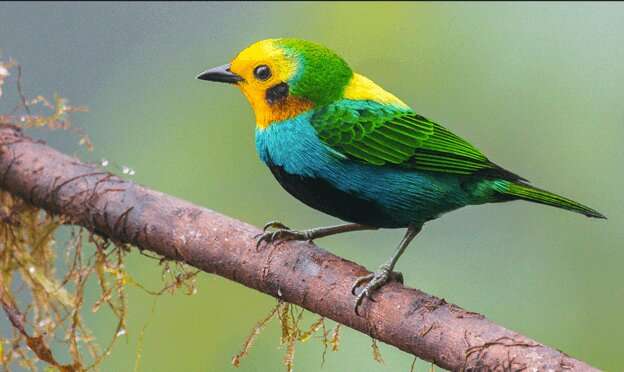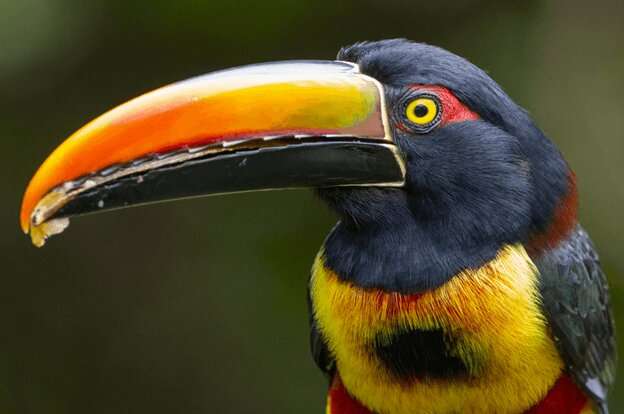Satellite and citizen data create precise range maps for at-risk bird species

Using satellite data and hundreds of thousands of crowd-sourced field observations, scientists have developed a more precise method for mapping the locations of habitats critical for the survival of more than 1,300 Central and South American forest bird species at high risk of extinction.
The new method allows conservationists to quickly and easily create customized, updatable maps that pinpoint areas of suitable habitat within a species' geographic range and, in many cases, identify previously overlooked areas of suitable habitat outside a range's current boundaries.
Ryan Huang, a research associate at Duke University's Nicholas School of the Environment, developed the new mapping framework in collaboration with colleagues at the International Union for the Conservation of Nature (IUCN), BirdLife International, the American Bird Conservancy, the Cornell Lab of Ornithology, Duke, and other leading research institutions and conversation nonprofits.
Their framework integrates up-to-date satellite data documenting changes in forest cover and land use at different locations and elevations across the region with more than 350,000 individual bird sightings posted on eBird, an online public database used by scientists and citizen scientists alike.
Maps created using the framework have already revealed some unexpected findings.
About 40 percent of the critically endangered bird species whose ranges were mapped were shown to have remaining areas of suitable habitat that are larger than their current published ranges. This is also true for 43 percent of the endangered species and 55 percent of the vulnerable species whose ranges were mapped.
"What's exciting is that by using crowd-sourced data—observations from your average bird watcher—we're finding birds in places outside where we thought they lived," Huang said. "This means that many threatened species may be more widespread than previously expected, which is really important for conservation."

"This is fantastic news," Huang said. "But at the same time, some of the species at highest risk, particularly those with the smallest geographic ranges, were shown to have barely any suitable habitat remaining. These are the species we should be prioritizing or else risk losing entirely."
Huang and his colleagues published their new mapping framework in a peer-reviewed article Nov. 24 in the open-access online journal PLOS ONE. The framework may be accessed in the supporting materials for the article.
"Conservation practice needs the very best maps we can produce to be effective," said Stuart Pimm, Doris Duke Professor of Conservation Ecology at Duke, who co-authored the paper with Huang. "We believe this innovative approach produces them and, above all, allows us to update them as species ranges shift because of habitat loss or climate disruption."
"These maps will help us identify which bird species are under-protected and where new conservation areas are needed," said co-author Daniel Lebbin, vice president of threatened species at American Bird Conservancy.
"Improving our understanding of species' distributions will enable us to make more accurate assessments of their extinction risk using the categories and criteria of the IUCN Red List, which in turn helps set priorities for action," said Stuart Butchart, chief scientist at BirdLife International, also a co-author of the study.
Beyond the updated estimates of habitat, the value of the new study is the transparency, reproducibility, and scalability of its methods, the authors say. The maps are entirely interactive, allowing users to investigate the observations used.
"When you open a field guide and you see a species' expected range, it's rarely clear what data that range is based on and how up-to-date it is," says Huang, who received his Ph.D. in ecology in 2019 from Duke. "With our maps, anyone can examine individual observations, make their own decisions on the validity based on where, when, and who made the observation, and then quickly create a customized map best suited to their purposes."
The team expects that the newly created mapping method will be applied to more species and taxa and will incorporate more data sources in the future.
More information: Ryan M. Huang et al, Batch-produced, GIS-informed range maps for birds based on provenanced, crowd-sourced data inform conservation assessments, PLOS ONE (2021). DOI: 10.1371/journal.pone.0259299
Journal information: PLoS ONE
Provided by Duke University




















